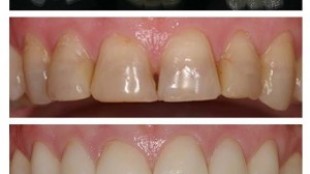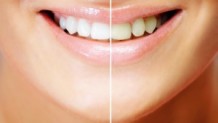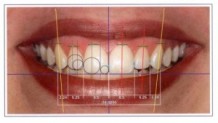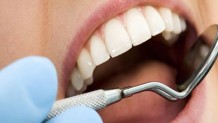Zirconium Teeth

What is zirconium? (Zirconium Crowns)
Many studies have been conducted so far in dentistry on aesthetics, tissue compatibility and natural appearance, , besides durability. Metal supported porcelains were introduced about 20-30 years before, followed by alumina porcelains, then E-Max and finally, dentistry has reached zirconium. Crowns and bridges made of zirconium are far beyond the metal supported bridges now, in terms of durability and processing techniques. Furthermore, through the studies conducted so far, they are proven to be superior to the metal supported porcelains for tissue compatibility.
Although the presently valid approach is not using zirconium supported prosthetics for front teeth unless this is inevitable, zirconium crowns have recently started to be used in gradually increasing rates in the front teeth as well. At the back side, meaning in the molar teeth region, the ideal alternative for long bridges are those made only of zirconium.
Zirconium can be used in advanced coloring cases where methods such as whitening would not be sufficient to produce satisfactory results (due to reasons like antibiotic use, fluorine, etc.), for combining separated teeth in persons with previously cut teeth (diastema closure), for persons who have a metal supported bridge or crown(s), for fixing of broken teeth, for fixing of discolored and deformed restorations, for fixing of crooked teeth (as an orthodontic treatment alternative) and for teeth with excessive material loss preventing restoration.
What is the difference of zirconium crowns?
- They have insulating property. Furthermore, special adhesion materials used prevent heat insulation with higher degrees as compared to other adhesives.
- Zirconium creates an aesthetic look very similar to that of natural teeth, whereas even very finely produced metal supported porcelain teeth appear dull and artificial to a certain extent. Therefore, zirconium is preferred in frontal teeth for long bridges or long toothless areas.
- Metal supported porcelains create a hollow image with certain types of light and appear as if they do not exist in the mouth. Zirconium teeth however, are translucent to any type of light just like natural teeth.
- Metal supported crowns – bridges are bonded only mechanically onto the tooth..Zirconium crowns – bridges, however, are adhered both mechanically and chemically due to their structure. Thus, they have higher adhesion degree as compared to the metal supported crowns – bridges.
- No dark lines appear at crown-gingiva meeting line since they do not have any metals in their substructure. Zirconium ensures a more aesthetic appearance.
- The color would not change due to external factors such as smoking, tea, coffee etc.
- It is a healthy material which does not cause any deterioration of taste, gingival problems or bad breath.
- _ Purple gums created by the former metal supported porcelain crowns are eliminated by implementation of zirconium crowns-bridges, ensuring an aesthetic and natural look.
- Zirconium based porcelain crowns do not pose any metal allergy risks (nickel, etc.) since they do not contain any metals in their infrastructure.
- It can confidently be used for persons who have or are prone to gingival diseases. Its compatibility with gingiva is perfect when used with appropriate preparation and adhesion materials, it does not create any gingival problems as long as the patient keeps good level of oral hygiene.
How long would it take for preparation of zirconium based crowns-bridges?
In Stage 1, teeth are shaved under anesthesia and a dental impression is prepared. Temporary teeth is prepared and bonded onto the shaved teeth to enable you to eat comfortably or talk until the subsequent trial stage. This also would prevent the potential sensitivity in your teeth.
In Stage 2, gingival conformity of the infrastructure prepared in the lab is checked.
In Stage 3, the crown-bridge is tried on the patient to complete the aesthetic and height checks. Arrangements, chewing surfaces and aesthetic appearance is checked during one or two sessions before adhesion. Then the crown-bridge is polished and bonded onto the shaved teeth



COMMENTS
POST A COMMENT